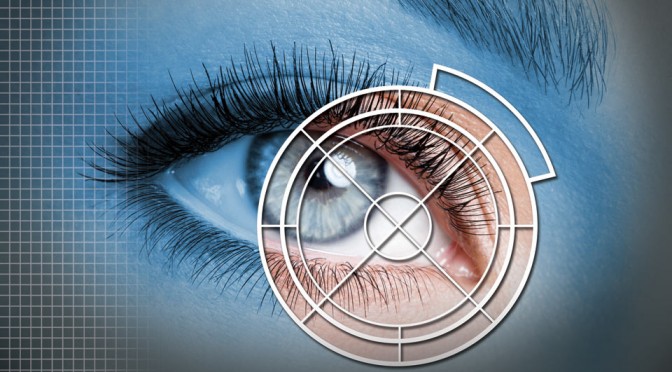Passwords are about to be a thing of the past — and UMKC is showing them the door. The replacement? A mobile app that can identify a person by scanning the vasculature patterns in the whites of his/her eyes. The ramifications are huge. Smartphone users all over the globe could soon use their “eye prints” to unlock accounts and access files.
And it’s all because of a collaboration among UMKC’s Innovation Center, the Office of Technology Transfer and an associate professor in the UMKC School of Computing and Engineering.
Nine years ago, Associate Professor Reza Derakhshani knew he’d hit a major breakthrough. With help from Arun Ross, an associate professor who at the time worked for West Virginia University, and UMKC School of Medicine Associate Professor Rohit Krishna, Derakhshani had created an identification system — one that seemed more likely to have come from a James Bond movie than a laboratory. The then-unnamed technology was notable for the fact that it was nearly foolproof. After all, the vasculature in every person’s eyes is unique. Twins, and even clones, don’t share the same vasculature.
There was just one problem. Derakhshani needed to find a venture capitalist to further develop the technology and direct the new start-up. Enter: UMKC’s Office of Technology Transfer, and UMKC’s Innovation Center. The Office of Technology Transfer immediately began working on patenting, marketing and licensing the technology. Over the years, James Brazeal, director of the Office of Technology Transfer, has been instrumental to this lengthy process.
The Innovation Center, which helps people start and grow businesses, was able to help with the more unconventional task of finding the perfect CEO.
“We were always waiting for someone to call us with an idea,” says Maria Meyers, Innovation Center director. “But a new grant from the National Sciences Foundation, ‘White Board to Boardroom,’ allowed us to look at the work being done at research institutions like UMKC and pair state-of-the-art research with the right management team.”
Meyers and her team set out on a non-traditional journey. They had the breakthrough technology, but they needed a visionary entrepreneur to take it to the next level. So they created a “CEO want ad,” a brief video that explained the technology and the type of leader they’d want.
At the time, the team imagined that its most practical applications would be in an airport, or maybe even in a casino’s security camera. After all, the technology could read a person’s identity from up to 10 feet away.
Then entrepreneur Toby Rush asked the question, “Can you do this on a cellphone?”
Since then, the company has grown steadily and garnered significant attention, including the 2013 Silicon Prairie Award for Startup of the Year. Recently, EyeVerify beat out eight other finalists from across the globe for a chance to win up to $1.3 million in funding in the Get in the Ring worldwide entrepreneurial competition.
“There’s great satisfaction of knowing that it’s a cutting-edge technology that has huge benefits beyond what’s already out there,” Meyers says.
The process was a long time coming for Derakhshani, who has worked for years in biometrics. These days, he can say with certainty what’s on the horizon for EyeVerify: “We’re gonna kill the password.”
Why not a fingerprint scanner?
The main advantage of eyeprints for cellphones is that they do not need additional hardware and work with existing phone cameras, while providing accuracies at least as good as fingerprints. A fingerprint scanner may be easily tricked by a gummy finger, or even carefully pressed Play-Doh.

